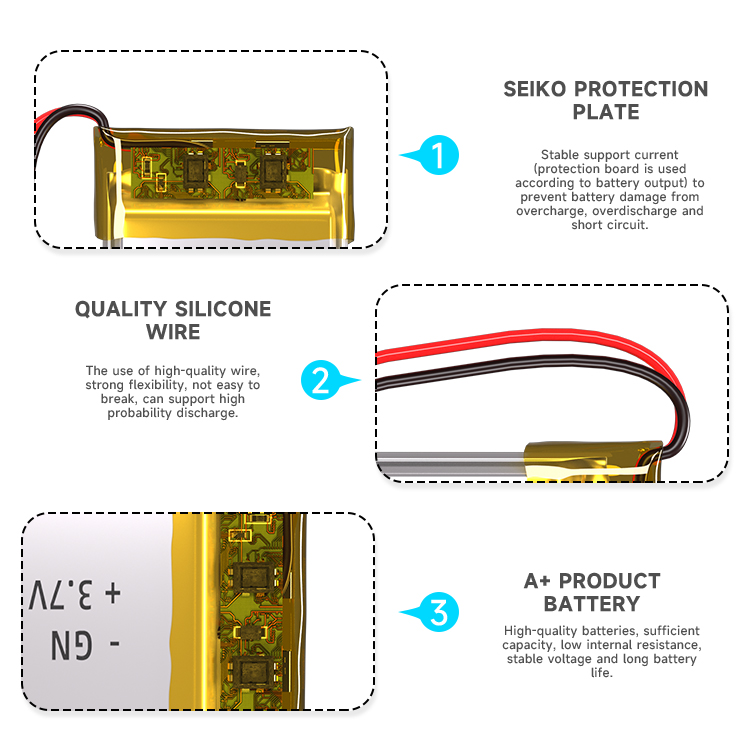

An introduction to the recycling process of dry batteries provided by electronic enthusiasts. An introduction to the recycling process of dry batteries. The recycling of old dry batteries mainly solves two problems. The first is the recovery of metallic mercury and other useful substances, and the second is the recovery of waste gas, waste liquid and waste.
Introduction to the recycling and processing process of dry batteries
The recycling of old dry batteries mainly solves two problems. The first is the recovery of metallic mercury and other useful substances, and the second is the treatment of waste gas, waste liquid and waste residue. At present, the recycling technology of used dry batteries mainly includes two metallurgical treatment methods: wet method and fire method.
1 Hydrometallurgical process
The metallurgical recycling process of used dry batteries is based on the principle that zinc, manganese dioxide, etc. are soluble in acid, so that the zinc, manganese dioxide and acid in the zinc-manganese dry battery react to form soluble salts and enter the solution. The solution is decomposed after purification Produce metallic zinc and electrolytic manganese dioxide or produce chemical products, fertilizers, etc. The methods used are roasting-leaching method and direct leaching method.
Roasting-leaching method
The roasting-leaching method is to mechanically cut used dry batteries, sort out carbon rods, copper caps, and plastics, and fully expose the internal powder and zinc cylinder of the battery. Then it is roasted in a vacuum roaster at 600 degrees Celsius for 6-10 hours to volatilize metallic mercury, NH4Cl, etc. into a gas phase, which is recovered through condensation equipment. The tail gas must be strictly treated to minimize the mercury content; the roasted product is powdered After grinding, magnetic separation and screening can be performed to obtain iron sheets and zinc particles with higher purity. The sieved material is leached with acid, and then metallic zinc and electrolytic manganese dioxide are recovered from the leachate through electrolysis.
direct leaching method
The direct leaching method is to crush, screen and wash the waste dry batteries, and then directly use acid to leach zinc, manganese and other metal substances in the batteries. After filtering and purifying the filtrate, metals can be extracted or chemical products can be produced.
2Pyrometallurgical process
Pyrometallurgical treatment of spent dry batteries is a process of oxidizing, reducing, decomposing, volatilizing and condensing metals and their compounds in spent dry batteries at high temperatures. The fire method is divided into two categories: traditional atmospheric pressure metallurgy and vacuum metallurgy. All operations of the atmospheric pressure metallurgical method are performed in the atmosphere, while the vacuum method is performed in a closed negative pressure environment. Most experts believe that the fire method is the best way to dispose of spent dry batteries and is effective in treating and recovering the amount of mercury.
Atmospheric pressure metallurgy
Currently, there are two traditional atmospheric metallurgical methods for treating waste dry batteries: one is to heat the waste dry batteries at a lower temperature to first evaporate the mercury, and then recover zinc and other heavy metals at a higher temperature; The waste dry batteries are roasted at high temperatures to volatilize the volatile metals and their oxides, and the residues are used as metallurgical intermediates or processed separately.
vacuum metallurgy
Since all the operations of the atmospheric pressure metallurgical method for processing waste dry batteries are carried out in the atmosphere, air participates in the operation, which has the disadvantages of long process and heavy pollution. Therefore, people have developed a vacuum method. The vacuum method is based on the fact that the components of used dry batteries have different vapor pressures at the same temperature. They are separated from each other at different temperatures through evaporation and condensation in a vacuum, thereby achieving comprehensive recycling. During evaporation, components with high vapor pressure enter the steam, while components with low vapor pressure remain in the residual liquid or residue. During condensation, the steam condenses into a liquid or solid at a lower temperature.

Popular recommendation
602248 polymer battery.Breakthrough in the synthesis of Wanxiang ternary high-nickel single crystal
2023-10-08R03 Carbon battery!Lixin Energy Cheng Jun: The relationship between battery energy density, market,
2023-10-0848v solar power energy storage power wall.What are the key points about the PACK process of 18650 li
2023-10-08Nickel Hydride No. 5.Policies guide the development of high-energy-density battery technology and ne
2023-10-08AG8 battery!Safety "core" is the foundation. Interpretation of Euler battery core technolo
2023-10-08Nickel Hydride No. 5 battery.Series lithium battery balanced charging battery pack protection board
2023-10-091.5v Alkaline battery.What is the production process of 18650 lithium battery?
2023-10-09cr2032 3v lithium battery.How to Use the Lithium Battery of a Sweeping Robot Correctly
2023-10-10Model comparison table of button battery
2022-06-18AG2 battery!Introduction to new solar power system power generation technology
2023-10-08AG3 battery.What is the production process of 18650 lithium battery?
2023-10-09603450 polymer battery.Innovation of power battery drying process under high nickel system
2023-10-08